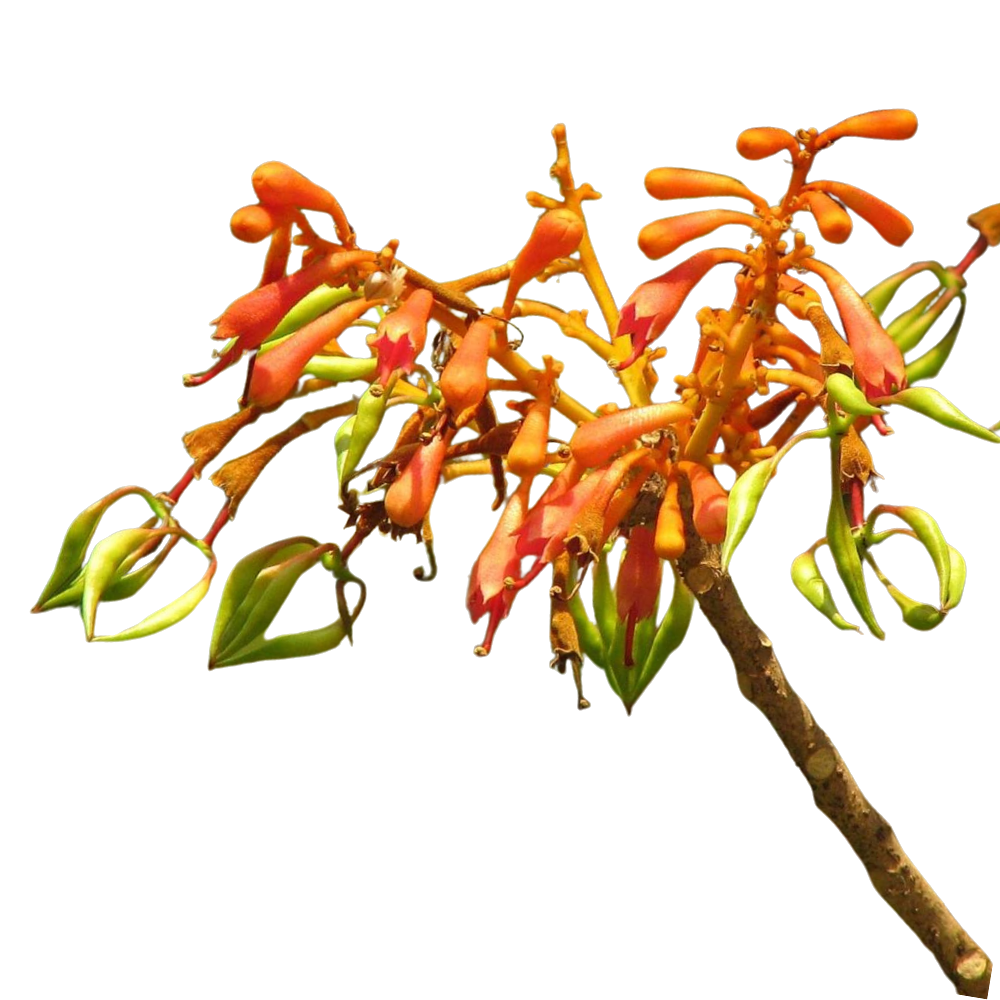Role in Nature:
The leaves of Sterculia colorata are food for the larvae of certain moths and butterflies, like the leaf miner moth Bucculatrix xenaula, which feeds only on Sterculia plants. Seeds of some Sterculia species, including Sterculia colorata, are edible and taste similar to cocoa.
Cultural Significance:
This tree is valued as an ornamental tree for its bright orange flowers that bloom before the leaves. However, the seeds of Sterculia species contain fatty acids, limiting their traditional culinary use. Its association with dung and manure influences its cultural significance.
Medical Significance:
- Karaya gum, derived from Sterculia colorata, acts as a bulk-forming laxative and stimulating bowel movements.
- It provides soothing effects as a demulcent, forming a protective film over mucous membranes to relieve irritation and inflammation.
- The gum helps treat diarrhea by absorbing excess water and forming a gel to solidify stool.
- It serves as a natural source of polysaccharides, supporting gut health by promoting the growth of beneficial bacteria.
Did You Know?
The genus name “Sterculia” is derived from the Latin god Sterculius, the god of manure, due to the aroma of the flowers in some Sterculia species

Role in Nature:
The leaves of Sterculia colorata are food for the larvae of certain moths and butterflies, like the leaf miner moth Bucculatrix xenaula, which feeds only on Sterculia plants. Seeds of some Sterculia species, including Sterculia colorata, are edible and taste similar to cocoa.
Cultural Significance:
Cultural
Significance:
This tree is valued as an ornamental tree for its bright orange flowers that bloom before the leaves. However, the seeds of Sterculia species contain fatty acids, limiting their traditional culinary use. Its association with dung and manure influences its cultural significance.
Medical Significance:
Medical
Significance:
- Karaya gum, derived from Sterculia colorata, acts as a bulk-forming laxative and stimulating bowel movements.
- It provides soothing effects as a demulcent, forming a protective film over mucous membranes to relieve irritation and inflammation.
- The gum helps treat diarrhea by absorbing excess water and forming a gel to solidify stool.
- It serves as a natural source of polysaccharides, supporting gut health by promoting the growth of beneficial bacteria.
Did You Know?
The genus name “Sterculia” is derived from the Latin god Sterculius, the god of manure, due to the aroma of the flowers in some Sterculia species
